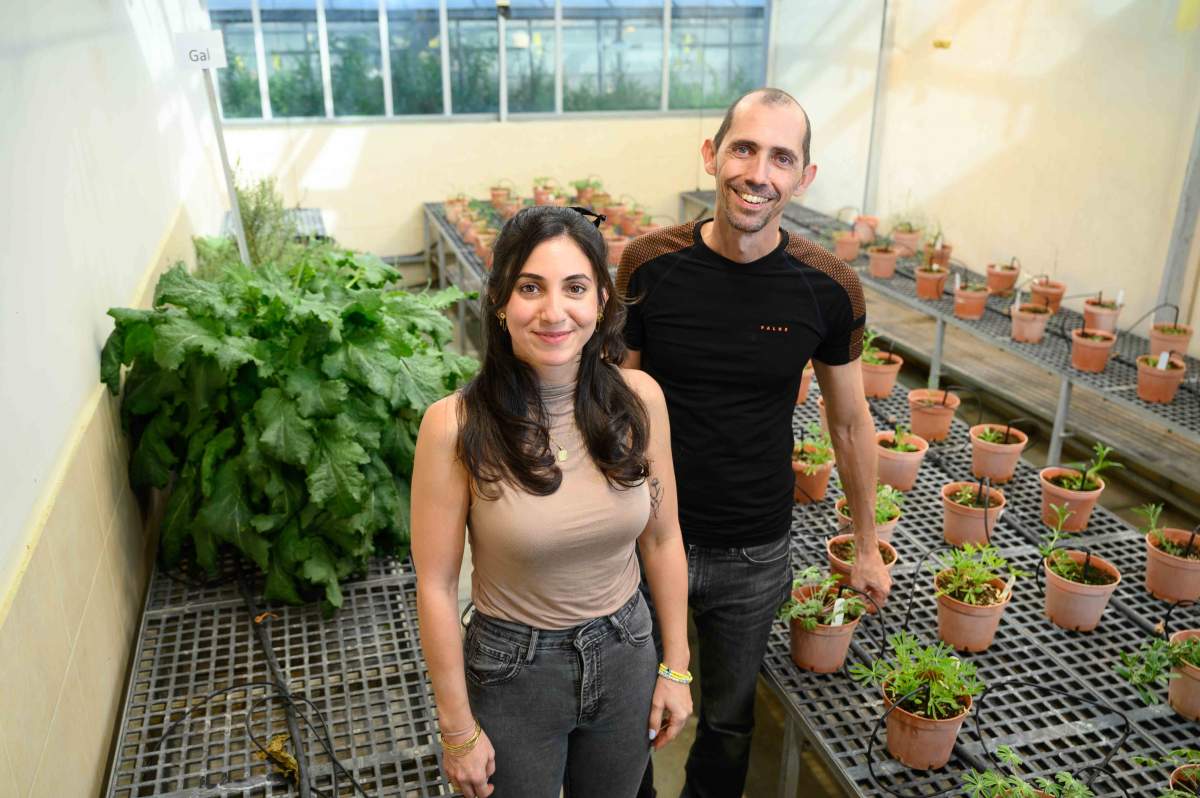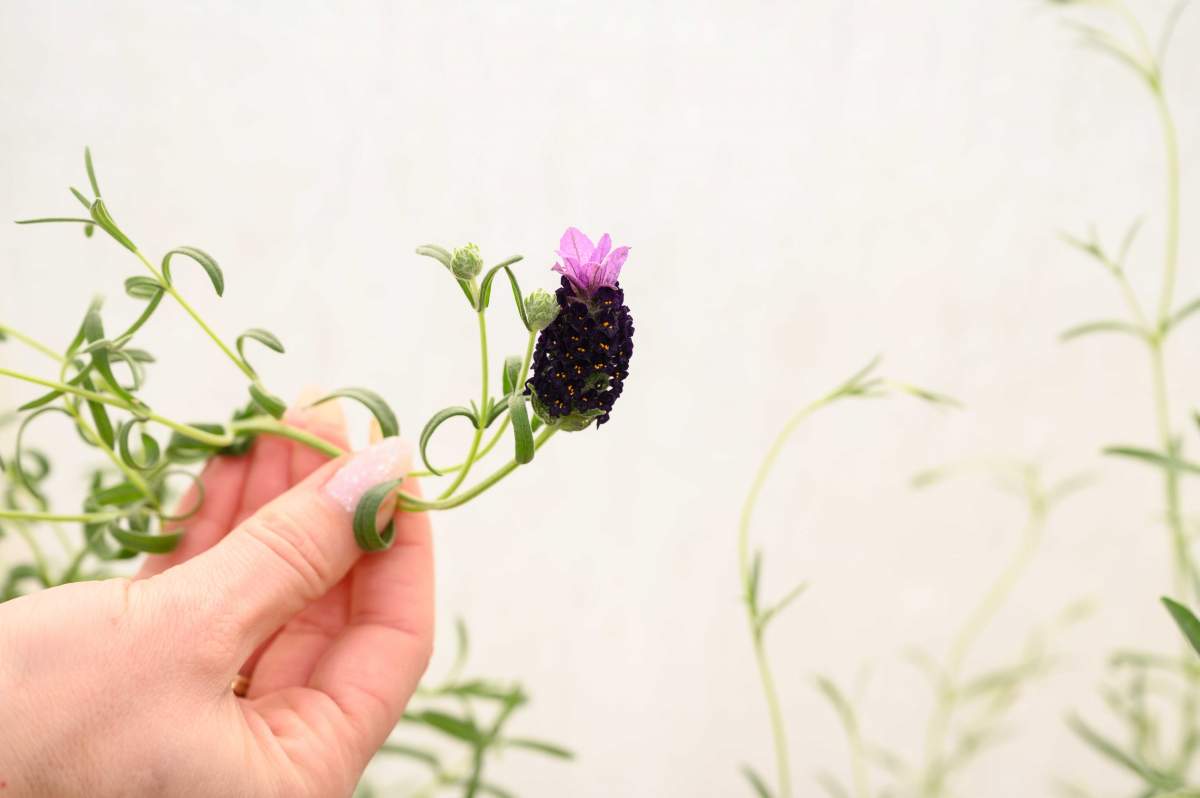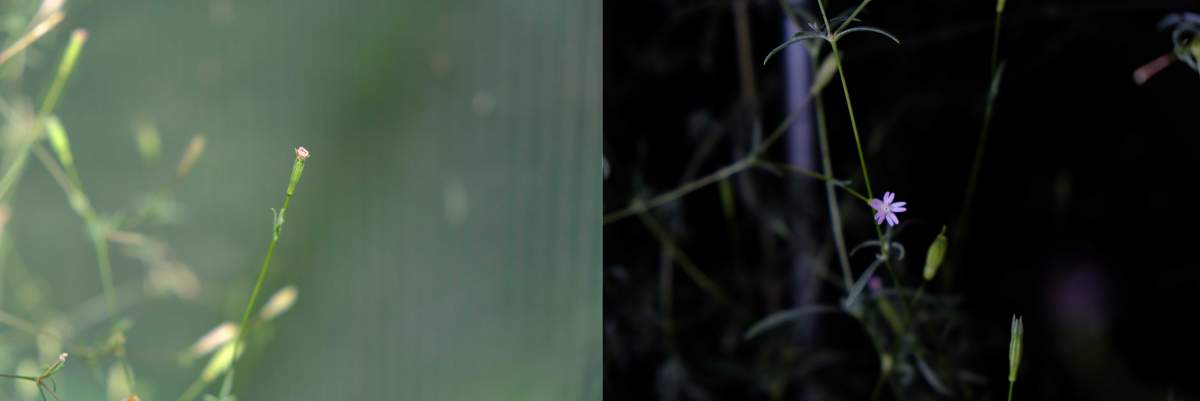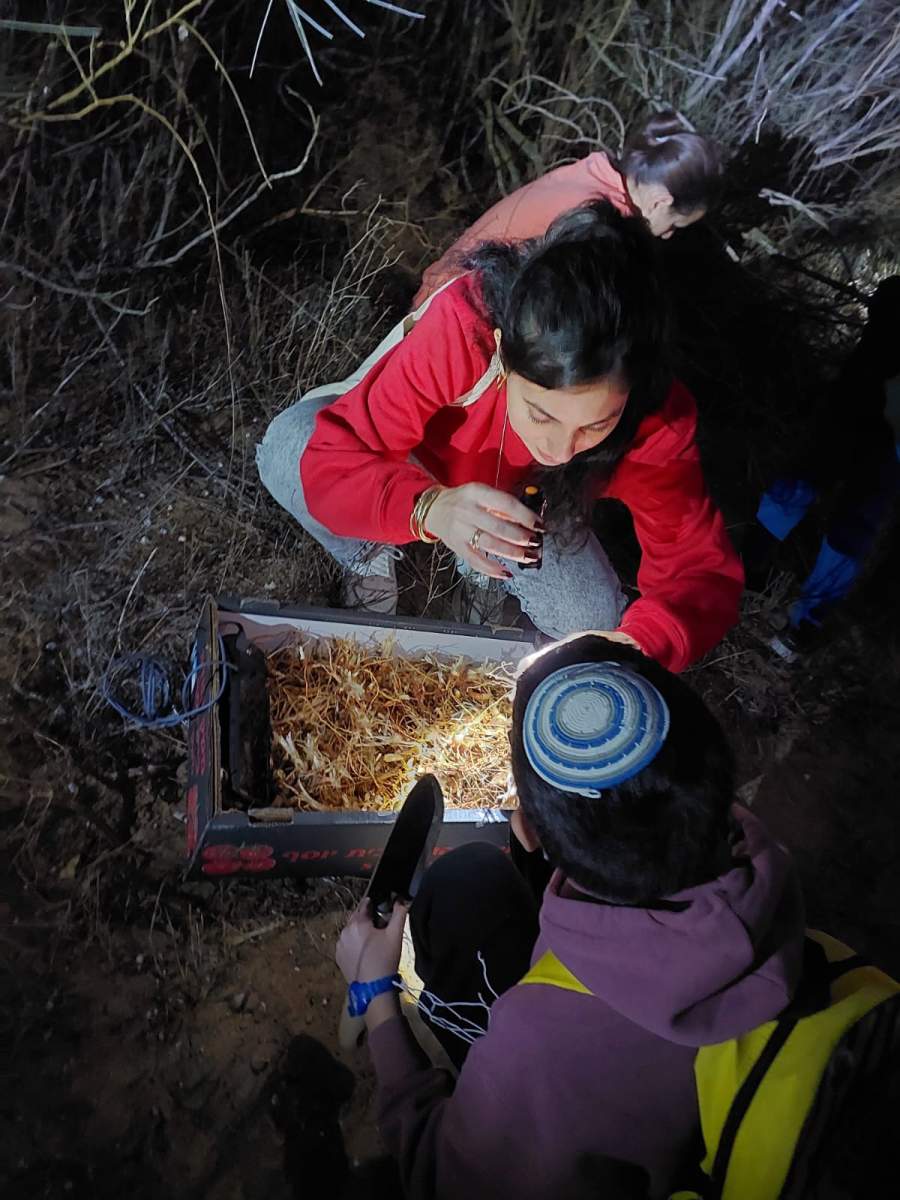When PhD student Gal Raviv thought of creating a sanctuary garden at the Weizmann Institute of Science, what she had in mind was saving endangered plants. But after the October 7 attack on Israel, the recently established garden became for her a refuge of serenity and strength. "There's something grounding about plants that keep growing no matter what happens around us. If they can do it, so can we," she says. "They represent what the land of Israel can produce and, in these difficult times, they symbolize our own roots in this land."
Raviv came up with the idea of the garden after hearing a lecture on plant conservation at a conference that Prof. Tamir Klein had organized at the institute. Klein, whose Weizmann lab specializes in tree research, was thrilled by her passion for the project. In late summer of 2023, they set up the garden in Weizmann's greenhouses, with full backing from Weizmann's Institute for Environmental Sustainability . Raviv's doctoral research, conducted in Prof. David Margulies's lab, is unrelated to plants and focuses on molecular aspects of cancer therapy. Nonetheless, she volunteered to tend the garden, getting crucial help from the greenhouse staff and relying on their expertise.
"When people hear about endangered species, they usually think of a toad whose swamp has dried up, or other animals or birds. But at the basis of any ecosystem are plants: They are the very foundation of our existence," Raviv says.
Adds Klein: "Plant diversity supports diverse insects that in turn provide food for birds and animals. When plant species go extinct, their loss can disrupt the integrity of an entire ecosystem."
Of some 2,300 wild plants found in Israel, more than 400 are in danger of extinction, according to the Red Book of Israel's Nature and Parks Authority. Plant species that are unique to Israel are particularly threatened: There are about 55 such species, and 35 of them are endangered. "We have a global responsibility to preserve these plants," Klein says.

The major threat to plants is habitat loss, which in Israel is especially acute along the Mediterranean. Sand dunes and other parts of the coastal plain are home to an unusually large proportion of wild plant species, yet to the plants' misfortune, that's also where humans love to settle. Less than 30 percent of the pristine coastal sands that used to line the Mediterranean in the early 20th century remained undeveloped by the beginning of the 21st. These sands might disappear altogether if left unprotected.
There are several plant sanctuaries in Israel, but not all have the proper climate to grow coastal plants outdoors, whereas the Weizmann campus, with weather that's similar to that of the coast, is well suited to this end. Raviv and Klein kept this in mind when compiling a list of plant species for the sanctuary and obtaining seeds from plant gene banks.
""There's something grounding about plants that keep growing no matter what happens around us. If they can do it, so can we"
Now in its second year, Weizmann's sanctuary garden holds some 20 endangered plants, a number of which are unique to Israel's coastal plain; others also grow in neighboring regions. Most are flowering annuals, but there are also perennials, as well as two species of ancient wheat, genetic relatives of today's crop varieties. These plants are gradually revealing their preferences and personalities to Raviv and the greenhouse staff, while occasionally serving up challenges and surprises.

Becoming the bee
Soon after the sanctuary garden was established, it became apparent that some plants had pollination issues. Since the greenhouses have no bees or other natural pollinators, some of the plants bloomed but produced no seeds. "So I became the bee," Raviv says.
To help some species, she made adjacent flowers "kiss," that is, touch in a way that pollen from one flower could get to the stigma, or ovary system, of another - a process known as self- pollination or cross-pollination, depending on whether the two flowers belong to the same plant or to different ones. She did that, for instance, for Erodium subintegrifolium, or makor hasida tamim in Hebrew, known as stork's bill in Europe and heron's bill in North America. In other species - such as the perennial Salvia eigii, marvat eig in Hebrew, named for the botanist Alexander Eig - the reproductive organs are too deep inside the flower for the kiss method to work. Raviv came up with a creative solution. She collected whisker hairs shed by her three cats and used them to transfer pollen from one flower to the stigma of another.
Luckily for Raviv, however, most plants in the sanctuary garden manage to pollinate by themselves. Some even spread their seeds with no help from the garden staff.
Late bloomers
Silene modesta, tzipornit hofit in Hebrew, from a genus also known as campion or catchfly - an annual plant that grows in sandy soil on the coast and in the western Negev desert - thrived in the sanctuary garden from the start. However, even though it produced lots of flower buds, these seemed to dry up before getting a chance to bloom. Raviv dropped by the garden at all hours of the day but never saw any open flowers.
A plant conservation expert told her to open one of the dried buds to see if it contained seeds. Indeed, it did, which meant that it had bloomed at some point without being caught in the act. So Raviv went to the garden late at night and, sure enough, found the slender Silene in full bloom. Keeping the bud closed after sunrise is the plant's clever strategy for reducing water evaporation during the hot hours, while also protecting its flowers from the strong daytime coastal winds. "I'd missed the bloom because the plant was 'sleeping' during the day," Raviv says.

The discovery prompted Raviv to initiate a research project in which she compares Silene modesta with its gorgeous unendangered relative, Silene palaestina, or tzipornit eretz-israelit. The goal is to uncover the biochemical processes that ensure water conservation in the endangered plant.
In fact, a major goal of plant conservation is to preserve valuable properties that might be lost forever should their carriers disappear. Revealing the mechanisms behind such properties might in the future make it possible to transfer them to other plants to, for example, help them grow in arid conditions or otherwise adapt to the adversities of climate change.
Moving back home
Several of the sanctuary's plants recently found an additional residence on campus outside the greenhouse, in the Clore Garden of Science, where they are on display as part of a dedicated exhibit. These plants will also form the basis of an environmental educational program that Klein and Raviv are currently developing with the Davidson Institute of Science Education. Both the exhibit and the program are intended to demonstrate the need for conservation and stimulate interest in native flora and in ecology.
"While our first goal in creating a sanctuary garden is conservation, our second goal is this: to raise awareness not only at Weizmann but around us, and to spread the enthusiasm for saving plants from extinction," Raviv says.

Returning endangered plant species to nature is yet a third goal of the sanctuary project. That is why plants in the sanctuary start out in pots but are transferred to shaded net houses. In this way, they gradually adjust to field conditions. Their seeds are being collected for sowing outdoors in the future, on the institute grounds and farther afield.
The researchers are selecting species from the Rehovot area for this purpose because these are most likely to be successfully reintegrated into the local environment. Klein explains that flowers are evolutionary latecomers; they evolved in a complex symbiotic relationship with insects and other animals, much later than the ancient mosses, ferns and palms that were already around at the time of dinosaurs. Still, flowering plants have spent millions of years adapting to their surroundings. The Silene family, for example, has been around for about 50 million years. "The one thing they didn't foresee is us," he says.
As they work to replant these species, the researchers strive to restore the local ecosystem to its original balance as closely as possible. Says Klein: "These plants were here long before us - before our forefathers conquered this land from nature - and now they are on the verge of disappearing. Let's give them some space to keep them from getting crowded out of existence."
The sanctuary garden could not have been established without essential contributions from many people. The staff of the Weizmann Institute greenhouses, among them Nadav Rorlich and Meirav Leibovitz, perform vital daily care. Help and expert advice was provided by, among others, Weizmann's Profs. Ron Milo and Avraham Levy, Daphna Yahav, Dr. Tzruya Chebach, Stav Gilutz and Merav Hernovitz; Merav Lebel Vine of Tel Aviv University; and Dr. Ori Fragman-Sapir of the Jerusalem Botanical Gardens. Klein and Raviv are developing the educational environmental program together with Dr. Michal Topaz, Maya Alayoff Barkan and Yahel Atsmon from the Davidson Institute of Science Education. Klein is a member of the Plant and Environmental Sciences Department; Margulies, Raviv's PhD advisor, is in the Chemical and Structural Biology Department.






